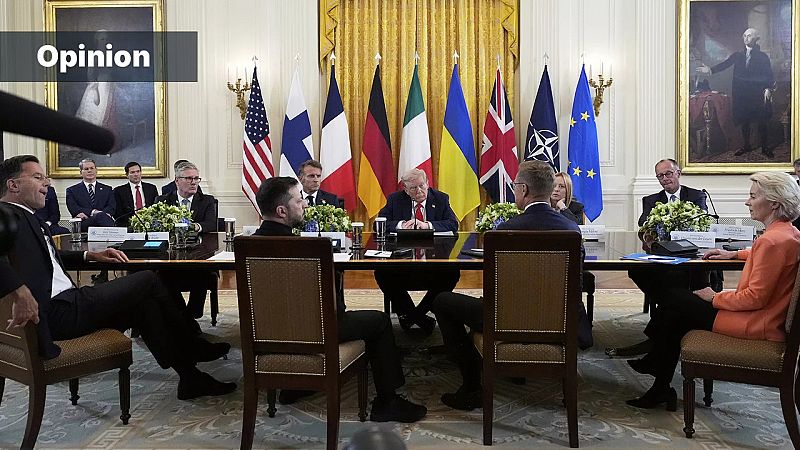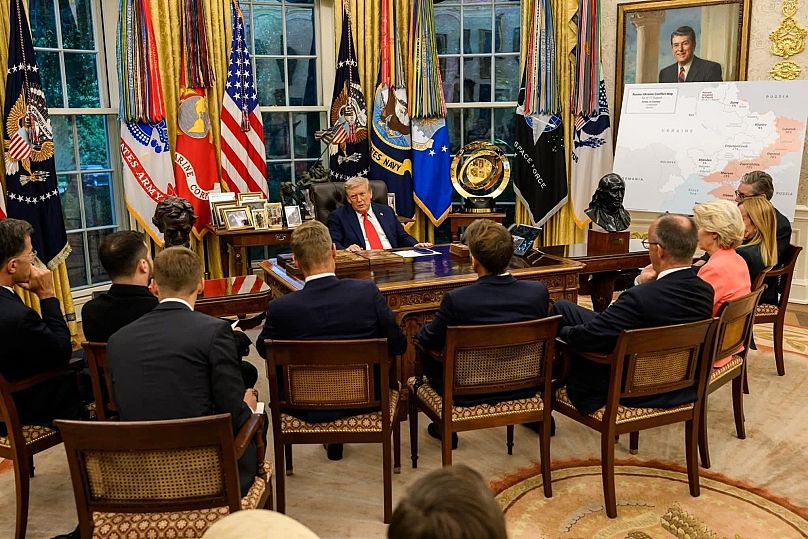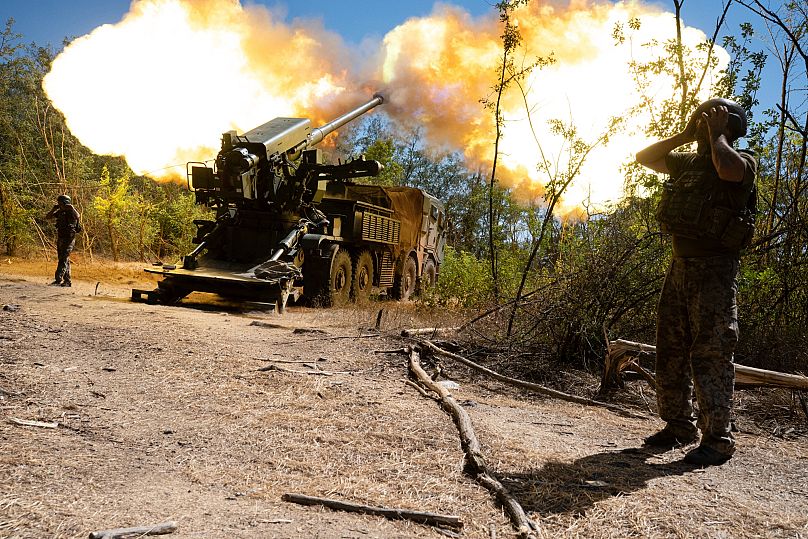Europe kneels before Trump in Washington

When Volodymyr Zelenskyy returned to the White House this week, he came flanked by an extraordinary entourage: German Chancellor Friedrich Merz, French President Emmanuel Macron, British Prime Minister Keir Starmer, Italian Prime Minister Giorgia Meloni, Finnish President Alexander Stubb, European Commission President Ursula von der Leyen and NATO Secretary-General Mark Rutte.
One by one, the political heavyweights of Europe crossed the Atlantic to sit alongside Ukraine’s president in Donald Trump’s Oval Office.
The image was striking, and humiliating. There they sat, arrayed in a semicircle, as if pupils in front of a school principal. The symbolism could not have been clearer: Europe had come not as an equal partner, but as supplicant.
This was not a demonstration of strategic strength, but of Europe’s continuing weakness and dependence on the United States. More dangerously, on the whims of a mercurial president who delights in reminding allies of their subordination.
For months, European leaders had insisted on showing a united front in defence of Ukraine. Their rush to Washington was meant to protect Zelenskyy from another public humiliation after his disastrous Oval Office encounter in February.
By surrounding Zelenskyy with European heads of state, the hope was that Trump might refrain from another televised scolding. In that narrow sense, the mission succeeded.
Zelenskyy wore a navy suit rather than fatigues, delivered a personal letter from his wife to Melania Trump, and played along with Trump’s lighter tone. Trump, in turn, offered vague promises of “Article 5-type” security guarantees without NATO membership.
Pleading with Trump
But this choreography should fool no one. Europe did not come to Washington to negotiate with America as a partner; it came to plead with Trump not to make a unilateral deal on Ukraine with Putin. The purpose of the delegation was to contain Trump’s unpredictability, to make sure the man who just days earlier had stood smiling beside Putin in Alaska did not suddenly decide that Ukraine was expendable.
Europe’s greatest diplomatic achievement was, in effect, damage control.
The headline promise was Trump’s endorsement of security guarantees, coordinated with Europe. But guarantees without substance are nothing more than words. Who will enforce them? Which countries will send troops? Who will secure Ukraine’s skies and seas?
None of these questions have answers, and they expose the basic truth: without America, the EU cannot deliver. Europe has neither the weapons stockpiles, nor the diplomatic weight, nor the political unity to deter Russia on its own.
The continent is still reliant on American intelligence, firepower, and leadership. The supposed European reassurance force is theater unless the US is involved. Trump knows this, which is why he can dangle vague promises and set the terms of debate.
Equally telling was what went unspoken in Washington. For weeks, reports swirled that Trump and Putin had discussed territorial “land swaps” along the current front lines, effectively freezing Russia’s occupation of parts of Donetsk, Luhansk, Kherson, and Zaporizhzhia.
Giving up territory
European capitals have repeatedly vowed that Ukraine’s borders cannot be changed by force. Yet in the White House, no one dared challenge Trump directly on the issue. Instead, he brushed it aside with a line that sounded principled but was in fact evasive: land, he said, was “a matter for Ukraine.”
That deflection keeps the door wide open for Moscow’s demands to creep back in, while Europe looks on helplessly.
This is the deeper humiliation. Europe insists on “strategic autonomy” but still behaves like a security protectorate of the United States. Macron may thunder about not showing weakness to Russia, but the weakness on display is Europe’s dependence on American will.
The EU cannot dictate terms to Washington, let alone to Moscow. The leaders who crossed the Atlantic were there not to shape outcomes, but to sweet-talk Trump and keep him engaged, lest he pivot fully toward Putin. They praised him, smiled for cameras, and avoided friction. Their unity was the unity of petitioners, not partners.
The dependence is structural. Since 2022, Europe has indeed stepped up aid to Ukraine, but in scale and impact, it remains secondary to US support. Even Germany’s much-heralded Zeitenwende defence shift has produced little of immediate deterrent value. NATO without America is a shell, and everyone knows it.
That reality gives Trump immense leverage. He can threaten tariffs, mock NATO allies, flirt with Russia, and still extract their obedience, because they cannot protect themselves without him. Europe’s security rests not on strategy or institutions, but on the impulses of one man in the Oval Office.
This is why the Washington meeting was less a breakthrough than a theatre of dependence. Europeans hailed Trump’s promises as progress, but they were applauding their own subordination.
When the fate of Ukraine, and by extension the security order of Europe, hinges on whether Trump feels like honouring his word, the transatlantic alliance is exposed for what it is: an asymmetric relationship in which Europe’s leaders can only beg.
The tragedy is that Europe knows this. It knows that “strategic autonomy” remains a slogan, not a reality. It continues to gather, obediently, in Washington, hoping that Trump will not abandon them, that Putin will be restrained, that American guarantees, no matter how vague, will suffice.
This is not strategy. It is dependency dressed up as diplomacy.
Ashok Swain is a professor of peace and conflict research at Uppsala University, Sweden.
Today




